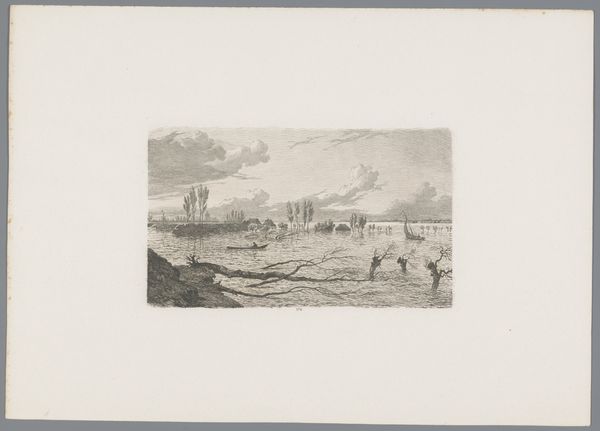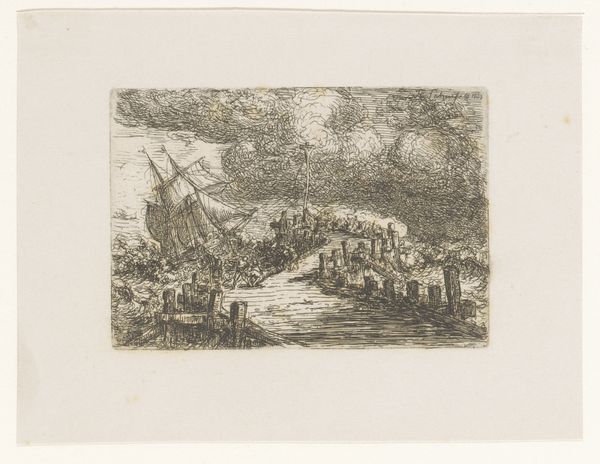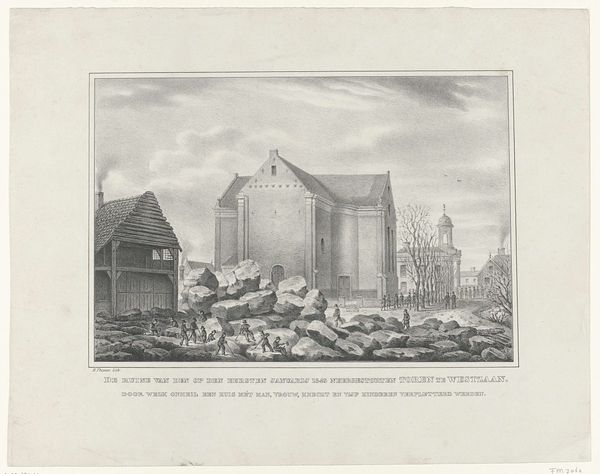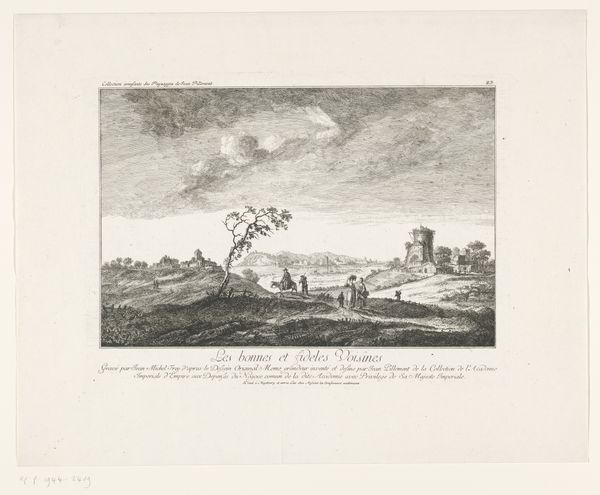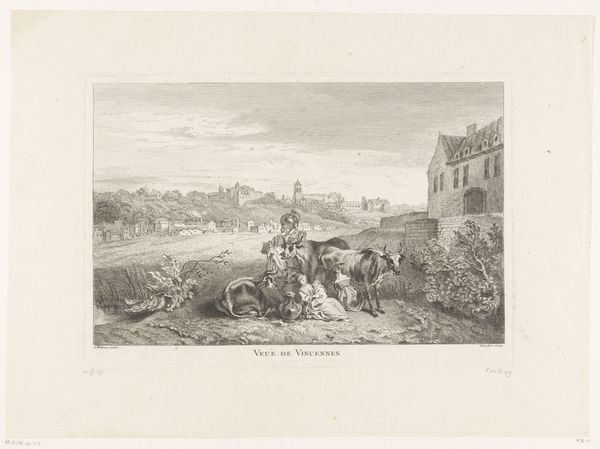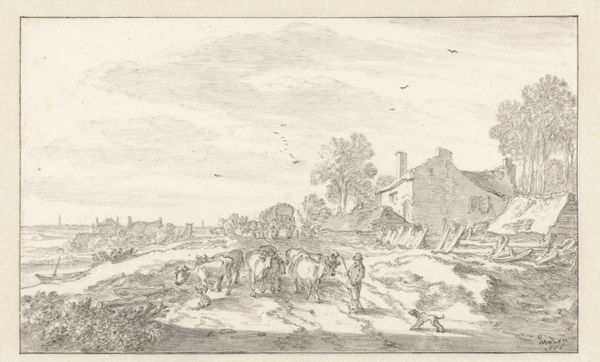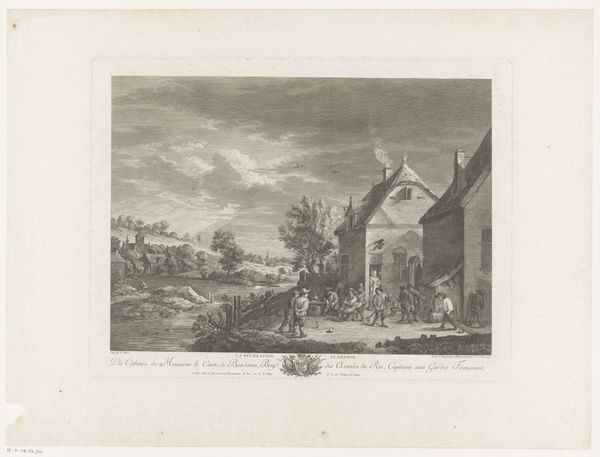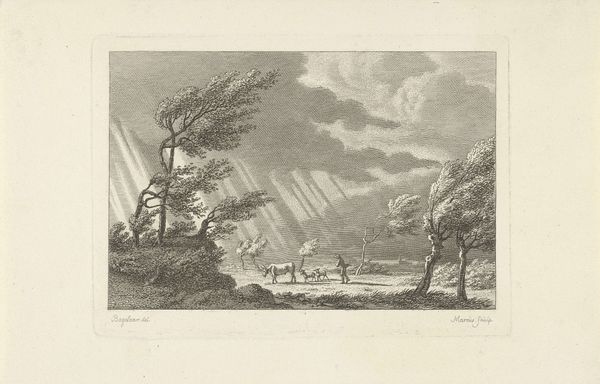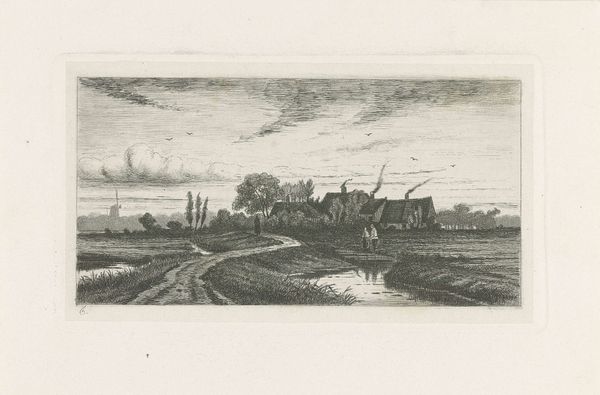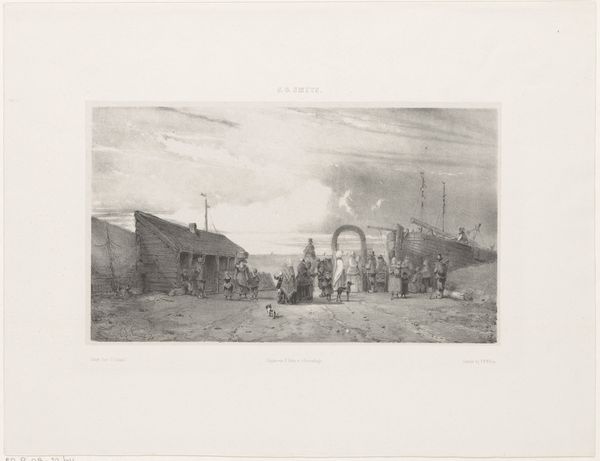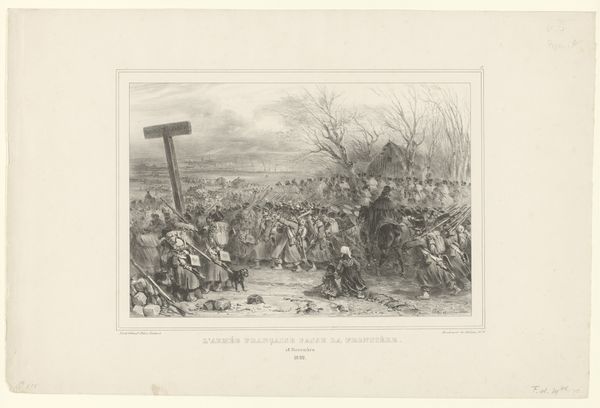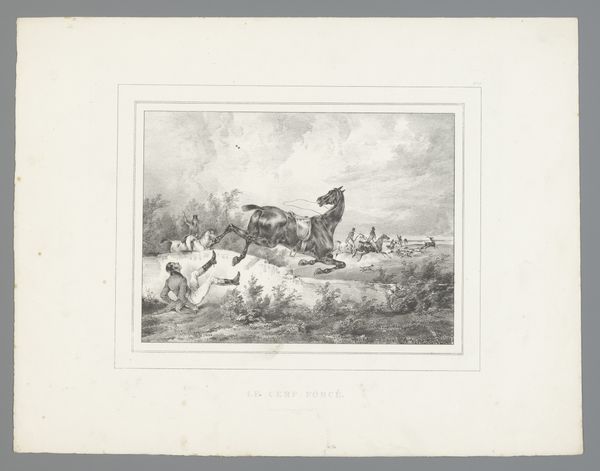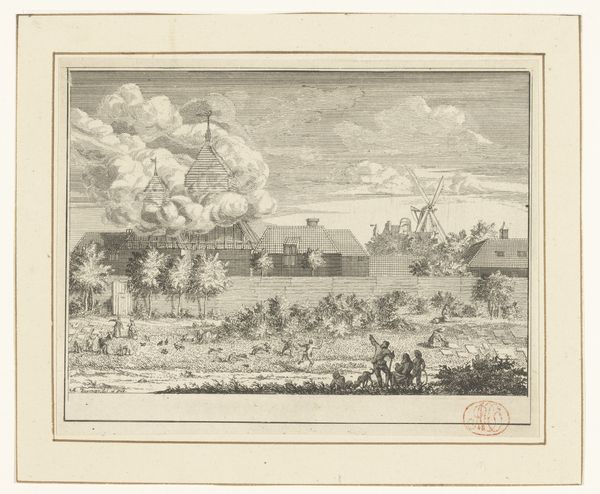
print, etching
# print
#
etching
#
landscape
#
romanticism
#
genre-painting
#
realism
Dimensions: height 243 mm, width 305 mm
Copyright: Rijks Museum: Open Domain
Curator: Here we have "Flooded Land Behind Buiksloot, 1825" by Willem Schults, an etching that really captures a moment of intense, everyday struggle. Editor: My initial impression is… ominous. The landscape feels utterly still, heavy with the expectation of disaster. That stark zigzag of lightning above the cottage just amplifies the drama. Curator: It’s true; Schults is playing with contrasts here. There's the almost idyllic portrayal of rural life – people moving livestock – set against this looming threat in the sky, this feeling of impending doom and actual, you know, flooding! And the deliberate use of etching, with its fine lines, enhances both the detail of daily life and the drama of the storm. Editor: Absolutely. And consider the materiality itself. Etching, with its roots in printmaking, makes this disaster accessible, reproducible, almost… consumable. It raises questions about how we represent collective hardship, turning a social event into something available to those who weren't affected. The focus is drawn towards the work involved to make this image. The hand, the plate, the press; the marks that indicate the artist's process. It makes you think about labor and access. Curator: That's a powerful point. You're nudging us to see beyond the surface drama. For me, there's also a resonance with the Romantic spirit of the era – this fascination with the sublime power of nature, its ability to overwhelm us. Editor: But it is, as you suggest, Willem's approach to that very same Romantic ideal. Schults emphasizes labor alongside that ideal of the "natural". We are very aware that the scene here had to be created manually. What this creates is an image not of the moment, but rather one reflecting upon moments passed and looking toward the moment as idea, an abstraction of something that really was not. Curator: It’s interesting how Schults balances that with a clear, almost detached, realism. This feels like an attempt to record an actual event, a specific place, as noted in the translated title itself: the day, month and year noted underneath. Editor: In a way it is a contradiction and this juxtaposition of approaches creates some of the best art to view as something complex. It’s this constant play between representing and observing. This really changes one's idea of what we might describe today as reality, whether or not it’s represented visually or by touch or by memory. It challenges our very notion of value when consuming art. Curator: A potent piece, indeed, capturing a specific moment in history and questioning representation itself. Editor: Indeed. Schults' focus makes us aware of material production within larger political and ecological pressures.
Comments
No comments
Be the first to comment and join the conversation on the ultimate creative platform.
